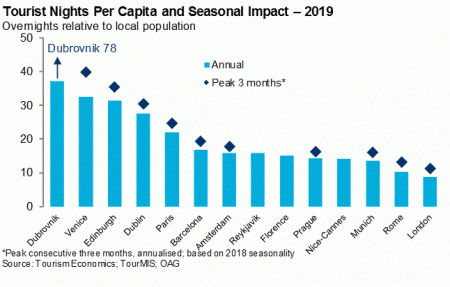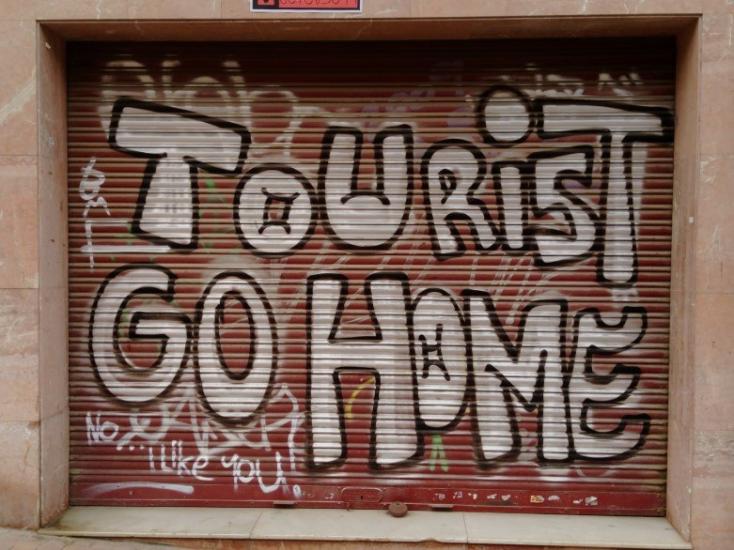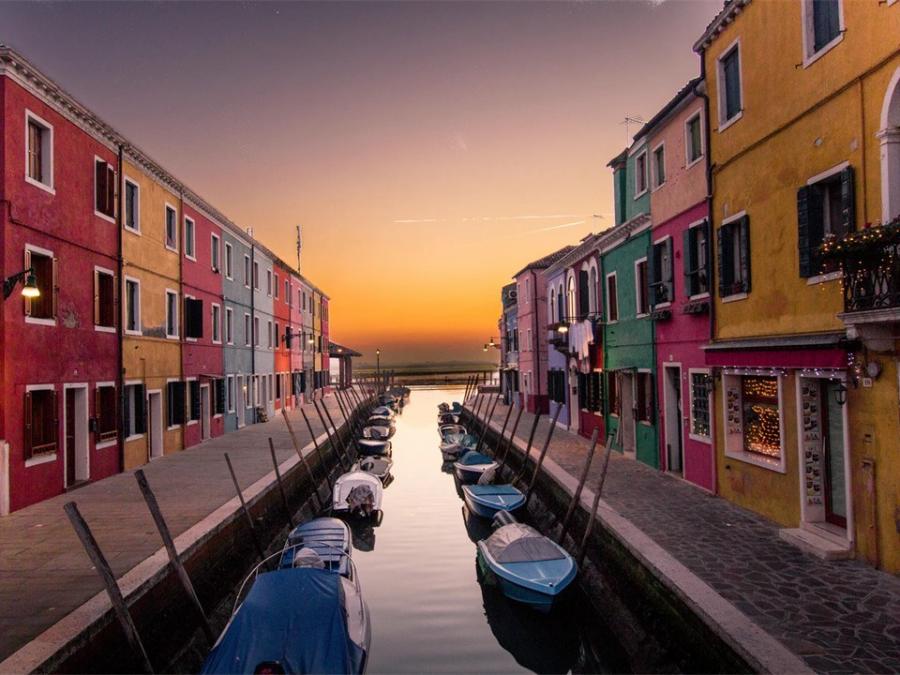
The Problem with "Overtourism"
Travel and Tourism | Europe
‘Tourist go home’ is a common phrase written in graffiti around the streets of Barcelona. This is indicative of growing concerns about ‘overtourism’ and anti-tourist sentiment in many European towns and cities. Given the increased attention in recent years, some research on the topic is warranted. In the research brief, "The Problem with Overtourism", we discuss the key issues surrounding the concept, some proposed solutions, and a measure of tourism intensity.

Tourism brings both economic benefits and costs to destinations, including for residents in the location. The Travel & Tourism sector contributes around 10% to global GDP and supports 325 million jobs. The costs are much more difficult to measure (as is the case with most industries), but we can broadly identify them as potentially raising living costs for residents and businesses, increasing congestion, and facilitating damage to the natural or built environment. The increase in concerns about ‘overtourism’ in Europe likely reflects the perception that the costs and benefits of the industry have become mismatched – in other words, the costs are incurred by different people than those who receive the benefits, and/or have increased in recent years.

In order for policymakers and stakeholders in the industry to address concerns about the potential costs of tourism, it is necessary to measure the degree of ‘overtourism’ – that is, the extent to which tourism may be excessive, including the level and distribution of costs relative to the benefits. A composite index of multiple indicators would be an ideal solution, but this is very difficult due to issues with data collection and comparability for many of these. We present one potentially illustrative measure of the costs of tourism – the intensity of tourism, calculated as the ratio of tourist nights to the local population of a city destination. Among selected European cities, Dubrovnik has the highest ratio at 37 tourism nights per capita in 2019, followed by Venice and Edinburgh. This ratio is even higher when adjusted for peak season visitation, especially for Dubrovnik (at a startling 78 nights per capita).

Michael Shoory, Senior Economist
Michael is currently conducting economic impact analysis and custom research projects.
Several destinations have responded to concerns about ‘overtourism’ by trying to disperse tourists across a larger geographic area (to minimise the costs of overcrowding), imposing restrictions on behaviour (such as Florence fining for eating in some public areas) or in more extreme cases banning tourists outright (such as in parts of the Faroe Islands). Ultimately, the challenge for stakeholders is to address the problem of ‘overtourism’ by seeking to maximise economic benefits while minimising costs. Given the importance of the Travel & Tourism sector to several countries and cities, this challenge is a significant one, and a solution more complicated that ‘tourist go home’.



